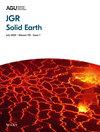Geophysical and geological studies provide evidence for cyclic changes in fault-zone pore fluid pressure that synchronize with or at least modulate slip events. A hypothesized explanation is fault valving arising from temporal changes in fault zone permeability. In our study, we investigate how the coupled dynamics of rate and state friction, along-fault fluid flow, and permeability evolution can produce slow slip events. Permeability decreases with time, and increases with slip. Linear stability analysis shows that steady slip with constant fluid flow along the fault zone is unstable to perturbations, even for velocity-strengthening friction with no state evolution, if the background flow is sufficiently high. We refer to this instability as the “fault valve instability.” The propagation speed of the fluid pressure and slip pulse, which scales with permeability enhancement, can be much higher than expected from linear pressure diffusion. Two-dimensional simulations with spatially uniform properties show that the fault valve instability develops into slow slip events, in the form of aseismic slip pulses that propagate in the direction of fluid flow. We also perform earthquake sequence simulations on a megathrust fault, taking into account depth-dependent frictional and hydrological properties. The simulations produce quasi-periodic slow slip events from the fault valve instability below the seismogenic zone, in both velocity-weakening and velocity-strengthening regions, for a wide range of effective normal stresses. A separation of slow slip events from the seismogenic zone, which is observed in some subduction zones, is reproduced when assuming a fluid sink around the mantle wedge corner.


